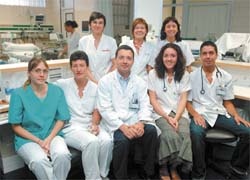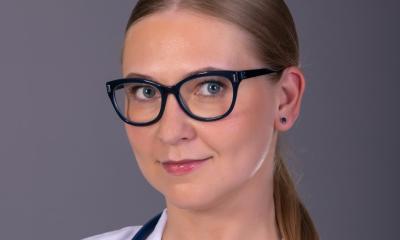Spanish ICU adopts IT
The Intensive Care Unit (ICU) in the Medicine and Dermatology Institute

The Intensive Care Unit (ICU) in the Medicine and Dermatology Institute, Hospital Clínico de Barcelona, has implemented the IT system Infinity ChartAssist.
In addition to freeing staff from manual data collection, Dr José María Nicolás, specialist in Internal Medicine and Intensive Care Medicine and Head of the hospital’s ICU, expects that this information solution will enable precise monitoring of the medical care process. The ICU also uses Infinity Delta patient monitors, which are fully integrated with ChartAssist, as well as Evita XL ventilators from Draeger Medical.
Before purchasing the equipment, Dr Nicolás and the ICU team first evaluated electronic data management systems made by various major manufacturers, in relation to their existing SAP Healthcare hospital information system (HIS). Their choice - Draeger’s Infinity ChartAssist - was made because it is designed specifically for critical care. ‘It was easy to customise the parameters at the user level, and there was no duplication with our existing HIS,’ Dr Nicolás pointed out, adding that the new system facilitates the collection of ICU data and consolidates all the different paper-based forms on one platform. ‘Thanks to that, we have simultaneous access to the entire HIS, including radiology examinations and lab results.’
When trained, the staff migrated to the new system in 24 hours. To aid planning, Dr Nicolás said, personnel attitudes to new routines were evaluated. Although a group of people showed slower adaptation characteristics ‘... the motivation of other department members spurred a very fast and problem-free implementation,’ he said. ‘The system is currently well accepted. Our nurses particularly like the automatic collection of monitoring information and different types of vital support systems data, because it allows more time for patient care. We hope that by reducing the time dedicated to collecting data manually - 20-30%, according to the literature - we’ll increase the level of patient care.’
Auditing - Based on his experiences, Dr Nicolás said that automating data collection facilitates the auditing of medical care processes. ‘We expect that data collection and subsequent information preparation will support decision-making in our daily work. In fact, automatic data collection does not make sense if it does not help us design ways to gauge different areas, such as resource tracking, evaluation of results, and patient medical care processes.’
Remote access - The web-based ChartAssist gives authorised users access to patient data from any PC connected to the hospital’s Intranet. The system can be configured locally or on the web, and many clinicians can access patient data simultaneously for consultations.
Dr Nicol·s believes that the need for intensive care will increase in coming years, explaining: ‘High-tech hospitals will specialise in treating serious diseases, while less serious problems will be treated in out-patient clinics. So, intensive medical care will be of major importance.’
If ChartAssist demonstrates that it benefits patient care, it is likely that it will be extended to the hospital’s other ICUs, Draeger reports.
• The 100-year-old, 782-bed Hospital Clínico de Barcelona, is a leader in medical assistance and educational training. It also has acquired international recognition for its scientific publications.
• The Medicine and Dermatology Institute’s ICU, which provides care for patients with infectious diseases, has 8 beds, 4 doctors, and 20 nurses. They tend 350 patients annually (average stay: 7 days).
01.03.2006






